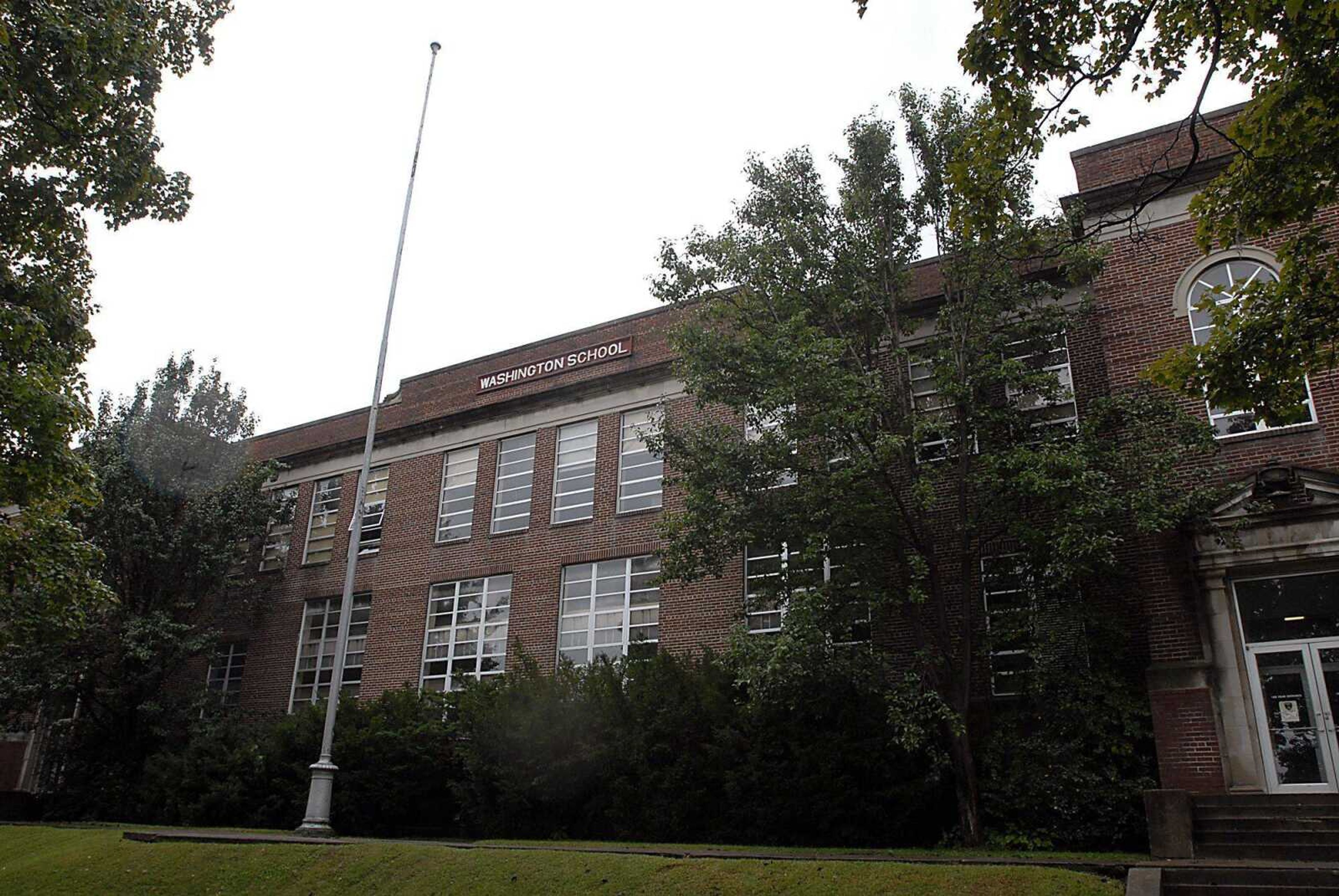Soon to be demolished, Washington School remains in students', teachers' memories
When teachers and students said goodbye to Washington School in 1999, they did not know what would happen to the building that served the Cape Girardeau School District for 85 years. Students, staff and alumni held a closing ceremony and set their sights on the district's newest addition, Blanchard Elementary School, which opened in 2000...
When teachers and students said goodbye to Washington School in 1999, they did not know what would happen to the building that served the Cape Girardeau School District for 85 years.
Students, staff and alumni held a closing ceremony and set their sights on the district's newest addition, Blanchard Elementary School, which opened in 2000.
The new school's namesake, Barbara Blanchard, spent more than 40 years of her life as a teacher, administrator and student at Washington School.
She said she was not surprised by Southeast Missouri State University's decision to tear down the building. It is a sign of the times, but saying goodbye to the building was like saying goodbye to an old friend.
"The one thing that you don't demolish are your memories," she said.
In the face of increasing utility costs and repair needs, the university's board of regents decided in October to demolish the building. The university uses the building for storage. It has a crumbling facade, a leaky roof and consumes $30,000 to $40,000 annually in utilities.
The university plans to tear down the building later this month, but no date has been set. As one building comes down, the finishing touches will be put on the nearby Autism Center for Diagnosis and Treatment. The university plans to put in parking areas and green space along Fountain Street for the center.
Washington School's history includes a strong sense of community connected to the building, Blanchard said. Classes began in a farmhouse in 1911 after a failed bond issue. In 1913, voters approved a $125,000 bond issue that financed the construction of Washington School as well as other district projects. The school, which was originally 40,000 square feet, opened at 621 N. Fountain St. in 1914.
Blanchard, who started attending the school during the 1940s, said she remembers collecting war bond stamps during World War II and walking up Mill Hill.
"I spent a lot of time sliding down the hill in sleet and snow," she said.
Teachers within the school had strong friendships. Retired teachers still meet occasionally for lunch, she said.
Mary Wilson, who retired in 1971 after teaching 50 years, also spent most of her career in Washington School. She was Blanchard's first-grade teacher, and their friendship continued into her career. Blanchard said she started school 15 days late after a bout with chickenpox and Wilson welcomed her into the classroom.
"She gave me a try, and she was my friend until she died," she said.
J.B. McClard, the district head of maintenance, went to the school in the 1970s. He was a second-generation Washington student, and his two children are school alumni. McClard was also the school's head custodian for about 16 years.
He said he remembers talking as a student to neighbors on the journey to and from school. Children "walked the line" because they knew they were being watched, he said.
"If you did anything wrong on the way to or from school, your parents knew about it before you hit the door," he said.
Despite fond memories, the building had its shortcomings, Blanchard said. Even though there were computers, the facilities could not accommodate as much modern technology as newer schools.
"The building just wasn't designed for the kind of curriculum we have today," she said.
Diane Mueller, a fourth-grade teacher at Blanchard, taught at Washington School for 15 years.
Teachers from Washington and May Greene schools combined to form Blanchard's new staff when it opened.
"It was a good thing, but it was different and we all had to adjust," she said.
Over the years the desks and bookcases that came from the old school were phased out. Mueller, who will retire at the end of this school year, is one of few Washington teachers left at Blanchard, she said.
She said she misses Washington's surrounding community. Children walked to school and neighbors participated in activities during play days.
Children "could stay after school for help because they could always walk home," she said. "We don't have that anymore, and I do miss that part, the neighborhood school."
But the building could not heat properly and temperatures in her classroom sometimes reached 97 degrees during the hottest months of school, she said. Classes were canceled when it got too hot, she said.
By the late 1990s, the building's systems were worn out, McClard said. He said he remembered going into the school on Sundays to turn on the boiler to warm the building for the next day.
"It was just past its time and I hate to see the building go, but it makes way for the autism center," he said. "I hope they have as long a history as Washington School had."
abusch@semissourian.com
388-3627
Pertinent address:
621 N. Fountain St., Cape Girardeau, MO
Connect with the Southeast Missourian Newsroom:
For corrections to this story or other insights for the editor, click here. To submit a letter to the editor, click here. To learn about the Southeast Missourian’s AI Policy, click here.










